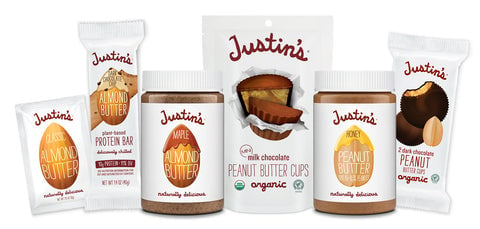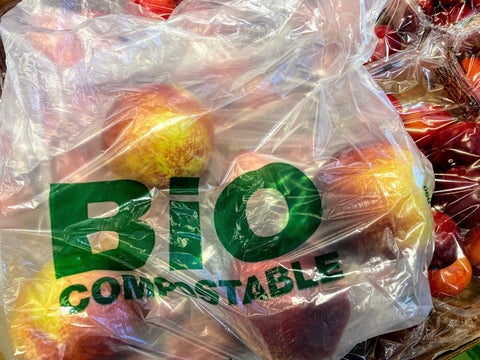Understanding Food Labels: How Customers See Your Product
Great design really does make a difference. We all know the value of beautiful imagery, memorable logos and innovative packaging. But how much attention are you paying to the information you’re providing?
The range of words, images and symbols used on food and drink packaging is becoming more and more sophisticated by the day. Society’s increasing preoccupation with health, wellness and environmental concerns has created a heightened awareness of positive eating choices. All this means consumers are becoming increasingly savvy about food labelling.
We’ve already looked at what CPG brands actually need to include on their packaging, but today it’s time to focus on customers themselves. After all, it’s no good meeting regulations if shoppers can’t understand what you’re selling!
In this second instalment of our Understanding Food Labels series, we explore consumer psychology. What do customers actually look for on a food label, how does this impact purchasing behaviors and what does this mean for your CPG brand?
If you want to understand how consumers actually see your product, then look no further.
Here’s everything you need to know about what shoppers are searching for and how you can meet their needs.

What do shoppers look for when reading CPG labels?
Food labels are a crucial way that CPG brands can inform, educate and influence purchasing decisions. They highlight key benefits such as mission-driven companies, organic produce and healthy options.
In a recent survey conducted by the International Food Information Council Foundation, a majority of consumers (59%) said they always read food labels before buying for the first time.
Taste is the primary consideration when making a food purchase. Price is second, but what might surprise you is that the “healthy” symbol ranks third highest in consumer decision making.
Notably, 43% of shoppers always look for healthy options, while 52% sometimes do.
Customers want to confidently select healthy options when desired (and indulgent treats on occasion too!). Despite this, many people report it’s difficult to always identify healthy food options.
So, how exactly do consumers make decisions on the healthfulness of products?
Where do shoppers look on CPG labels?
When reading food labels, consumers typically look at the nutrition facts panel first (69% of shoppers) and the ingredients list second (67%). As part of this process, customers look for ingredients that food does contain rather than things it doesn’t.
Interestingly, whilst symbols and icons are a significant factor in purchasing decisions (more on this later!), shoppers report paying more attention to the nutritional information on food packaging than marketing labels.
And the places consumers seldomly check?
Company websites, corporate social responsibility statements and mobile phone apps are the least popular places for assessing the healthfulness of products.
If in doubt, don’t ignore the packaging– it really is that important.
Do CPG food labels influence customers?
The short answer is yes. Packing information really does influence purchasing.
But we’re assuming you’d like a little explanation here!
Many studies have examined the effects of nutritional information on consumer viewpoints, preferences and choices. For the consumers’ take on commonly used benefits, let’s take a look at a few case studies:
#1 Organic
It’s been reported that customers view organic products as containing fewer calories. While you know that “organic” certifications refer to farming methods, many shoppers additionally associate this with improved nutritional content and ethical practices.
What’s more, “organic” isn’t just perceived as having a better nutritional profile. It’s also associated with lower fat levels and higher fiber content.
So, if you sell organic products, it’s worth shouting about this. Consumers will not only understand your high farming standards, but will also associate this with overall healthfulness.
#2 Heart Healthy
In one randomized experiment, consumer reactions to “heart-healthy” claims were analyzed.
As part of this, the heart healthy symbol was placed on frozen pasta dinners. Consumers who saw the symbol reported more favorable attitudes about the product than those who saw the packaging without the label.
So what does this tell us? It shows the importance of food icons and how they can be used in conjunction with nutritional information to inform purchasing.
The more positive customer attitudes included “nutritious,” “good for your heart” and “part of a healthy diet.” That’s something any CPG brand would want!
#3 Low Sodium
The link between high salt consumption and increased blood pressure has been well known for many years. Given that the CDC estimates 90% of American adults consume too much sodium, it’s no wonder salt is top of mind for consumers.
But did you know that the “reduced salt” label actually has a negative impact on consumer taste perception? We’ve already seen that taste is the number one quality that consumers look for, so this is worth considering.
It’s even been shown that when presented with low-sodium options, shoppers end up adding extra salt upon consumption. So, be careful with similar claims.
What does this mean for CPG labeling?
It’s clear that food labeling is a vital part of purchase decisions.
But how can you influence shoppers in the right way and provide genuinely useful information that consumers want?
Here are a few guidelines:
Keep it positive
Use your food label and packaging design to point out ingredients shoppers are looking for.
We’ve learnt that shoppers look for ingredients food does contain rather than things it doesn’t – so focus on the positives. Does your product have high levels of calcium, fiber or protein? The latest superfood? Great! Make sure you’re talking about this.
Don’t use too many symbols
Symbols and icons can be incredibly useful to shoppers wanting to make a quick decision. “Healthy” and “heart-healthy” symbols influence overall nutritional attitudes and purchases – but don’t forget the details.
Customers use additional nutritional information more than marketing icons, so make sure this wording is easy to find, read and understand.
That being said, branding and aesthetics are still essential elements of packaging. We’ve previously looked at great logo design – so remember, it’s all about balance!
Clarity is key
Given that more than half of consumers are always looking for healthy choices, it’s a market worth capitalizing on. Despite this, 11% of consumers report it’s difficult to find relevant information on food labels.
If you want to help consumers make truly informed, confident decisions, keep things clear, simple and easy to comprehend. Trust us, customers will appreciate it.
Double-up on benefits
Remember consumers are looking for positives, not negatives. With this in mind, why limit yourself to just one label? If you sell an organic product that is also low in calories or salt – then say so! High in fiber as well as vitamins or protein? Great – let them know!
Shoppers might presume benefits from the nature of your product, but help confirm their assumptions by making this obvious.

Remember sustainability
As a final consideration, there’s nothing to say your CPG food label has to stick just to nutrition and ingredients. Consumers are increasingly looking for environmentally friendly options, placing high importance on ethical farming practices.
If you can boast “Fair Trade” Certification, non-GMO or “sustainably harvested,” it will make all the difference.
If you’re looking to grow your CPG brand and increase your sales, the Buffalo Market blog has all the inspiration and advice you need.
As the leading distributor of purpose-driven food and beverage brands, we are the experts in foods that will become an increasing part of our world. From packaging design to marketing, career paths and winning distribution deals, make sure you’re up to speed.


